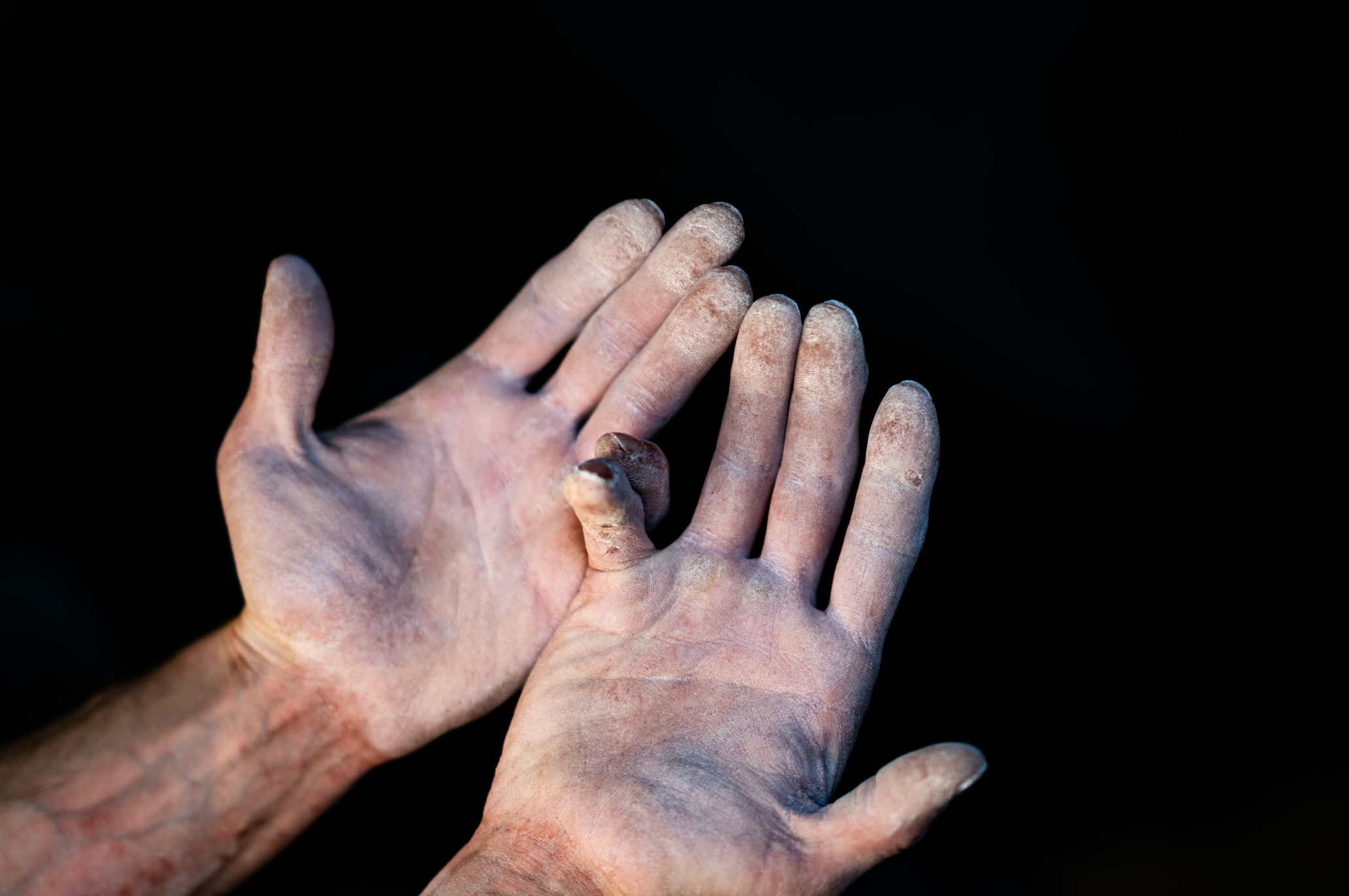The Science Behind Send Temps
If you’re in the northeastern U.S., the recent heat wave probably has you yearning extra hard for those fall send temps. Does climbing in cold temperatures really improve performance though?
When planning your next trip to the crag, keep an eye out for the temperature and humidity. Though there are plenty of climbers out at the crag in the summer, the weather conditions tend to be less-than-ideal due to higher temperatures and greater humidity. Let’s take a look at some of the research on performance and weather conditions!

Temperature and Athlete Performance
Temperature generally affects performance by bringing changes to an athlete’s core temperature (the temperature of the blood in the major arteries). In warmer environments, our core temperature rises, and while the body can tolerate some changes to core temperature, that range is small. This is why we have different mechanisms to maintain an ideal internal temperature (thermoregulate).
One that we’re most familiar with is sweating. The evaporation of sweat from our skin is the main method of cooling core temperature. However, as most of us know, sweating leads to dehydration, which, ironically, interferes with the process of evaporative heat loss and gets in the way of our ability to reduce core temperature. This is why staying hydrated and getting your electrolytes, especially in the heat, is so important!
In addition to sweating, our bodies will thermoregulate by carrying away heat from the core. Ever notice people’s faces get red in the heat? That’s the skin exhibiting increased blood flow as that heat is being carried away to be dissipated! This creates a bit of a problem for athletes, though, since we need increased blood flow to working muscles for oxygenation. The “competition” between our working muscles for oxygenation and core for thermoregulation might be why the finger flexors appear to have lower endurance in higher temps.
|
Finger Flexor Performance |
Temperature Comparison (50°F vs. 80°F) |
|
Max force production |
No difference |
|
Endurance |
Lower in warmer temperatures |
|
Recovery after fatigue |
Faster in warmer temperatures |
Planning to climb in the heat? Researchers have found that precooling can effectively prevent the negative consequences of heat-stress-induced fatigue and prolong athletes’ heat tolerance in hot environments. While doing an ice plunge at the crag is probably not going to happen, one practical choice is drinking a significant amount (1L) of a cold drink (if you have a thermometer, we’re talking 4°C or 40°F) pre- or mid-session. According to research, a slushie would be even better! We already know hydration to be key when we’re sweating, but with a cold drink, there’s the added benefit of cooling your internal body temperature! Daniel Woods in Little Cottonwood Canyon
Daniel Woods in Little Cottonwood Canyon
Photo: Brennan Robinson
Humidity and Sweat and Work Production
If the evaporation of sweat is our bodies’ primary strategy for cooling down, we need to be aware of things that might affect the process of evaporation. That’s where humidity comes in.
When humidity is expressed as a percentage, it describes the amount of moisture in the air relative to the amount that it can hold at a specific temperature. A higher percentage indicates that the air is near its max capacity and can’t hold much more water vapor. Because of this, the evaporation process, our primary cooling mechanism, slows down significantly, and it may take longer and more work for the body to regulate core temperature.
|
Performance Measurement |
Humidity Comparison (19% vs. 85%) |
|
Work capacity |
Lower with high humidity |
|
Sweat response |
Greater with high humidity |
|
Recovery |
Slower in high humidity |
So… Send Temps?
Ultimately, temperature seems to have minimal effects on skin friction and force production. It’s the humidity that we need to look out for. Humidity seems to have a larger indirect effect on our performance through increased heart rate, sweat response, and overall discomfort.
Whether you’re sweating from the heat or the humidity, though, Friction Labs has got you covered with the best liquid chalk on the market! Liquid chalk is best for drying out excessive moisture and oils in your hands, maximizing friction between you and the holds. In humid conditions, loose chalk may be absorbed too quickly by the moisture in the hand, resulting in less friction with the rock. And for those with sensitive skin prone to cracking, alcohol-free liquid chalk is the choice for you.
References
-
doi:10.1080/17461391.2017.1328707
-
doi: 10.1186/2046-7648-4-S1-A146
-
doi:10.1080/14763141.2012.724700
-
doi: 10.1007/s40279-012-0014-9
-
doi: 10.2519/jospt.1995.21.3.158
-
doi: 10.1080/23328940.2019.1666624
Dr. Miguel Zevallos, PT, DPT
Climbing Rehab, Founder
Shannon Cheung, MSW
Climbing Rehab, Executive Partner

